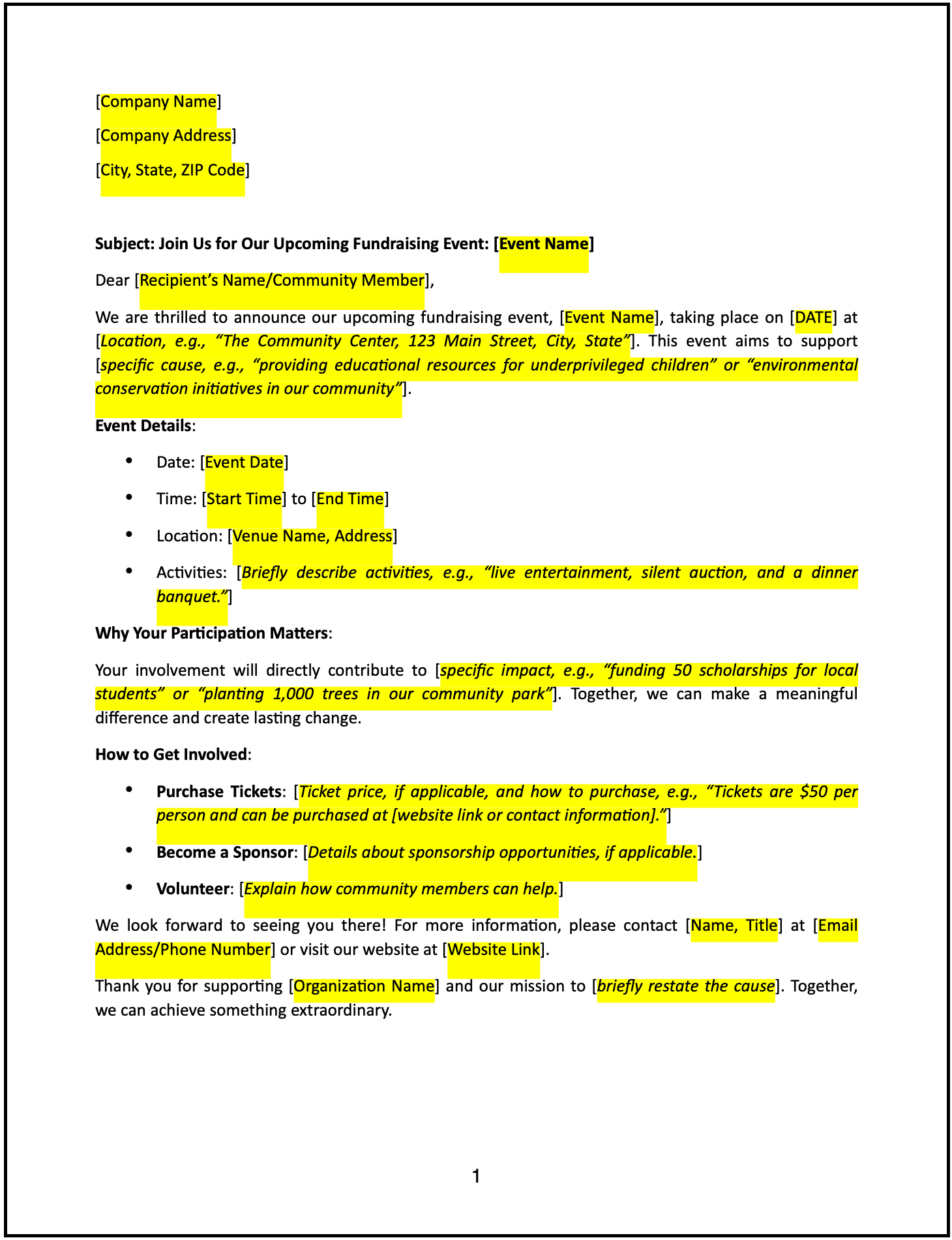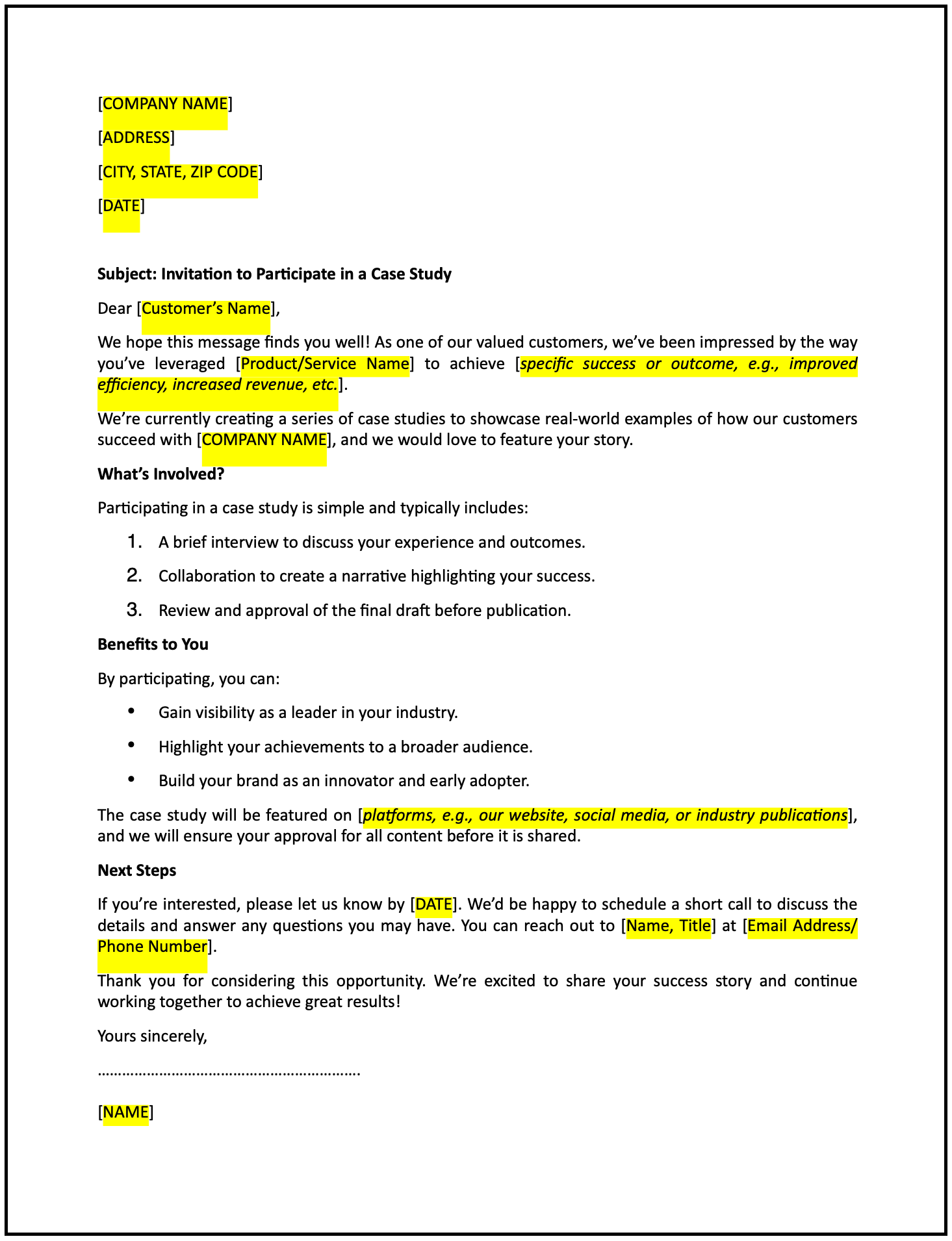Letter of temporary relocation of office or business premises: Free template

Letter of temporary relocation of office or business premises
A temporary relocation notice letter is a formal communication used to inform clients, partners, vendors, or stakeholders that your office or business premises will be temporarily relocated. This letter provides the relocation address, the effective dates, the reason for the move (if appropriate), and any impacts on operations or contact methods.
This type of letter helps ensure uninterrupted communication, manage expectations, and maintain trust during the transition period. It is typically used during renovations, infrastructure upgrades, or emergency situations requiring a temporary move.
How to use this letter of temporary relocation of office or business premises
- Open with an introduction: Address the recipient respectfully and state the purpose of the letter.
- Provide relocation details: Include the new temporary address, the effective start and end dates of the relocation, and any relevant logistical details.
- Explain the reason: If appropriate, briefly explain why the relocation is necessary (e.g., renovations, repairs, or upgrades).
- Clarify impact on operations: Outline any changes to business hours, service availability, delivery schedules, or communication methods.
- Confirm continuity: Reassure the recipient that operations will continue during the relocation period and provide updated contact information if needed.
- Invite questions: Encourage the recipient to reach out with any concerns or questions related to the temporary move.
- Maintain a professional tone: Keep the message clear, courteous, and informative throughout.
- Provide contact information: Include your full name, title, company name, phone number, and email address so the recipient can easily follow up.
Benefits of using a letter of temporary relocation of office or business premises
- Promotes transparency: Keeps stakeholders informed about operational changes and minimizes disruptions.
- Reflects professionalism: A formal notice shows respect for business relationships and attention to detail.
- Supports continuity: Helps clients and vendors adjust smoothly to the temporary change in location.
- Builds trust: Clear communication reinforces reliability and stability even during transitions.
- Reduces confusion: Proactively addressing logistics avoids miscommunication and service delays.
Tips for writing an effective letter of temporary relocation of office or business premises
- Be specific: Clearly state the new address, effective dates, and any temporary adjustments to business operations.
- Use professional language: Maintain a respectful and informative tone that promotes confidence.
- Provide context: Briefly explain the reason for the move if relevant and appropriate.
- Highlight continuity: Reassure the recipient that operations will continue with minimal disruption.
- Include actionable information: Provide any necessary instructions, such as updated shipping addresses or revised contact details.
- Keep it concise: Focus on clarity and key logistics while maintaining a courteous tone.
Frequently asked questions (FAQs)
Q: What details should I include in this letter?
A: Include the temporary address, the duration of the relocation, the reason (if applicable), and any changes to operations or communication.
Q: Should I personalize the letter?
A: Yes. Addressing the recipient directly helps maintain a professional and client-focused tone.
Q: Who typically sends this letter?
A: Business owners, office managers, or operations leads responsible for stakeholder communications.
Q: How formal should this letter be?
A: The letter should be professional but approachable, depending on the nature of your relationship with the recipient.
Q: When should this letter be sent?
A: Send the notice at least two to four weeks in advance of the relocation date, or as soon as the move is confirmed.
Q: Can this letter include a map or directions?
A: Yes. Including a map or link to the new location can help recipients find the temporary premises more easily.
Q: Is acknowledgment from the recipient required?
A: It’s not mandatory, but you may request confirmation, especially if the change affects delivery or service coordination.
This article contains general legal information and does not contain legal advice. Cobrief is not a law firm or a substitute for an attorney or law firm. The law is complex and changes often. For legal advice, please ask a lawyer.


